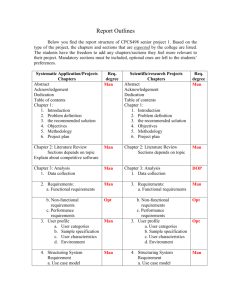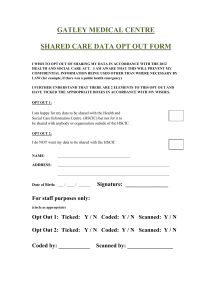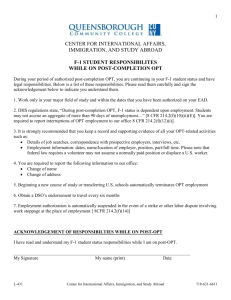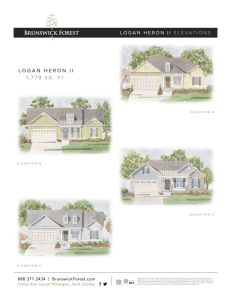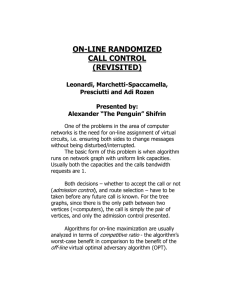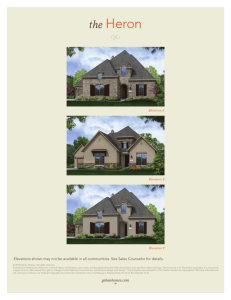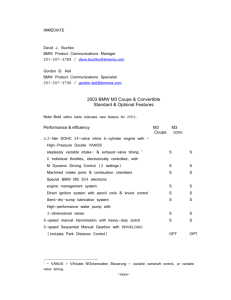CPCS499 Report structure
advertisement
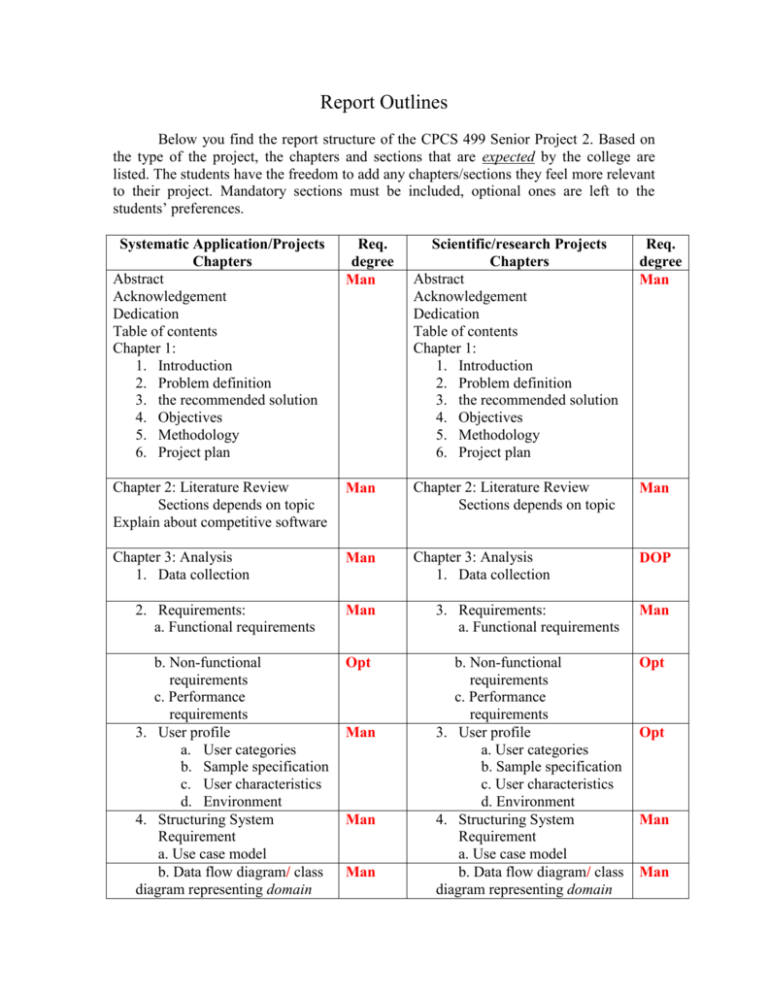
Report Outlines Below you find the report structure of the CPCS 499 Senior Project 2. Based on the type of the project, the chapters and sections that are expected by the college are listed. The students have the freedom to add any chapters/sections they feel more relevant to their project. Mandatory sections must be included, optional ones are left to the students’ preferences. Systematic Application/Projects Chapters Abstract Acknowledgement Dedication Table of contents Chapter 1: 1. Introduction 2. Problem definition 3. the recommended solution 4. Objectives 5. Methodology 6. Project plan Req. degree Man Scientific/research Projects Chapters Abstract Acknowledgement Dedication Table of contents Chapter 1: 1. Introduction 2. Problem definition 3. the recommended solution 4. Objectives 5. Methodology 6. Project plan Req. degree Man Chapter 2: Literature Review Sections depends on topic Explain about competitive software Man Chapter 2: Literature Review Sections depends on topic Man Chapter 3: Analysis 1. Data collection Man Chapter 3: Analysis 1. Data collection DOP 2. Requirements: a. Functional requirements Man 3. Requirements: a. Functional requirements Man b. Non-functional requirements c. Performance requirements 3. User profile a. User categories b. Sample specification c. User characteristics d. Environment 4. Structuring System Requirement a. Use case model b. Data flow diagram/ class diagram representing domain Opt b. Non-functional requirements c. Performance requirements 3. User profile a. User categories b. Sample specification c. User characteristics d. Environment 4. Structuring System Requirement a. Use case model b. Data flow diagram/ class diagram representing domain Opt Man Man Man Opt Man Man model model Chapter 4: System Design 1. Prototype design 2. Database design 3. Structure Design (e.g. Class diagram if the programming language is OO.) 4. User interface design Opt Chapter 5: Implementation 1. Tools 2. Interface Description 3. Walkthrough the system Chapter 6: Usability Testing 1. Methods used in usability testing 2. Test design 3. Pilot test 4. Criteria of measuring usability 5. Conducting the test 6. Results Man Man Man ------------ Chapter 7: Conclusion 1. Problems and difficulties 2. findings 3. Recommendations 4. Future work 5. Conclusion References Appendix List of Figures List of Tables Man Chapter 4: System Design 1. Prototype design 2. Database design 3. Structure Design (e.g. Class diagram if the programming language is OO.) 4. User interface design Chapter 5: Implementation 1. Tools 2. Interface Description Opt Chapter 6: Usability Testing 1. Methods used in usability testing 2. Test design 3. Pilot test 4. Criteria of measuring usability 5. Conducting the test 6. Results All/Part of Chapter 6 Testing the system against the objectives of the research - experiments - results - summary Chapter 7: Conclusion 6. Problems and difficulties 7. findings 8. Recommendations 9. Future work 10. Conclusion References Appendix List of Figures List of Tables Opt Used Acronyms: Man: Mandatory Opt: Optional Highly Req.: Optional but highly recommended DOP: Depends On the Project. Dr. Mai Fadel Man Man Man Man
